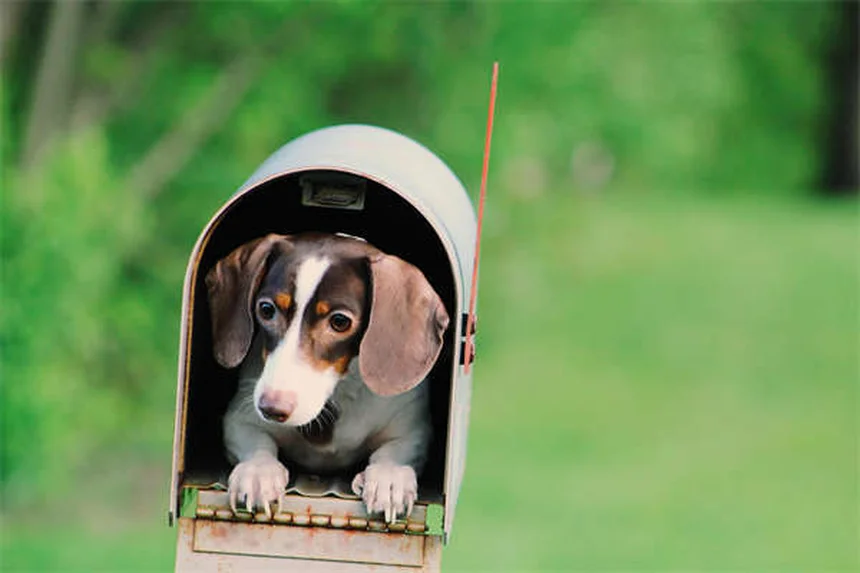Rainbow fentanyl is real - and it's targeting our kids. The DEA's shocking warning reveals these colorful pills have been seized in 18 states, designed to look like candy while containing a substance 100 times stronger than morphine. Here's the hard truth: fentanyl caused 66% of all U.S. overdose deaths in 2021, with just 2 milligrams being potentially lethal. We're not talking about typical street drugs - this is a calculated attempt by cartels to make deadly substances appealing to young people. The bright colors aren't accidental; they're a marketing strategy that could cost lives. But you can protect yourself and your family by understanding what we're up against.
E.g. :5-Minute Breathing Exercises That Lower Blood Pressure Fast (Backed by Science)
- 1、Rainbow Fentanyl: The DEA's Urgent Warning
- 2、The Shocking Truth About Fentanyl
- 3、How Fentanyl Tricks People
- 4、What You Can Do to Stay Safe
- 5、The Bottom Line on Rainbow Fentanyl
- 6、The Hidden Dangers in Plain Sight
- 7、Beyond the Rainbow: Other Dangerous Trends
- 8、The Human Cost We Rarely Discuss
- 9、What Schools Aren't Telling You
- 10、Innovative Solutions Worth Watching
- 11、Your Role in This Fight
- 12、FAQs
Rainbow Fentanyl: The DEA's Urgent Warning
What's the Deal with These Colorful Pills?
You've probably seen the news - the DEA is sounding the alarm about something called "rainbow fentanyl." These aren't your ordinary pills. They're bright, colorful, and designed to look like candy - which makes them especially dangerous.
Let me break it down for you: In August alone, authorities seized these dangerous pills in 18 different states. We're talking about pills that could easily be mistaken for sweet treats, but contain a substance that's 50 to 100 times stronger than morphine. That's not just dangerous - that's playing Russian roulette with your life.
Why Should You Care About Fentanyl?
Here's a scary thought: Did you know that in 2021, fentanyl was involved in 66% of all drug overdose deaths in America? That's right - out of 107,622 overdose deaths, about 71,000 were fentanyl-related. These numbers aren't just statistics - they represent real people, real families torn apart.
Fentanyl started as a legitimate pain medication, but now it's flooding our streets in dangerous forms. Drug cartels are getting creative, making these pills look like prescription medications or even candy. It's like they're trying to trick people into taking something that could kill them instantly.
The Shocking Truth About Fentanyl
 Photos provided by pixabay
Photos provided by pixabay
How Powerful Is This Stuff Really?
Imagine this: Just 2 milligrams of fentanyl - that's about the weight of a few grains of salt - can be lethal. That's why it's so terrifying. You could accidentally take a tiny amount and never wake up.
Here's a quick comparison to show you how dangerous fentanyl is compared to other opioids:
| Drug | Lethal Dose | Comparison |
|---|---|---|
| Morphine | 200 mg | Standard dose for severe pain |
| Heroin | 30 mg | Typical dose for experienced users |
| Fentanyl | 2 mg | Can be fatal to most people |
See what I mean? This isn't just another drug - it's a potential death sentence in pill form.
Why Are They Making It Look Like Candy?
Here's the really messed up part: drug cartels are specifically designing these pills to look appealing to young people. Bright colors, fun shapes - they're counting on people letting their guard down because "it looks harmless."
But let me ask you this: Would you eat something if you didn't know exactly what was in it? Of course not! That's why we need to be extra careful with anything that didn't come directly from a pharmacy with a doctor's prescription.
How Fentanyl Tricks People
The Deadly Disguise
Fentanyl is showing up in pills that look exactly like prescription medications - think Percocet or Oxycodone. People think they're getting one thing, but they're actually getting something far more dangerous. It's like ordering a soda and getting pure alcohol instead - except much, much worse.
The worst part? There's no way to tell just by looking. These counterfeit pills are so well-made that even experienced users can't spot the difference. That's why so many overdose deaths are accidental - people simply didn't know what they were taking.
 Photos provided by pixabay
Photos provided by pixabay
How Powerful Is This Stuff Really?
You might be thinking, "Can't you just test the pills?" Well, here's the thing: while fentanyl test strips exist, they only tell you if fentanyl is present - not how much. And with this drug, the difference between "a little" and "too much" is microscopic.
Let me put it this way: would you play catch with a grenade just because you knew it was a grenade? Of course not! Knowing it's dangerous doesn't make it safe to handle.
What You Can Do to Stay Safe
Protecting Yourself and Your Loved Ones
First and foremost: never take pills that weren't prescribed to you by a doctor. Not from a friend, not from some guy online, not even from someone you trust. If it didn't come from a pharmacy with your name on it, don't put it in your body.
And parents, listen up: with Halloween coming up, this is especially important. Those colorful pills might look like candy, but they could be deadly. Teach your kids to only accept wrapped, store-bought treats - and to show you anything suspicious.
What to Do in an Emergency
If you or someone you know accidentally takes fentanyl, call 911 immediately. Every second counts with this drug. And if you have questions - maybe you're worried about a friend or just want more information - call Poison Control at 1-800-222-1222. They won't judge, they'll just help.
Remember: there's no shame in asking for help. The only shame would be not asking when you needed it.
The Bottom Line on Rainbow Fentanyl
 Photos provided by pixabay
Photos provided by pixabay
How Powerful Is This Stuff Really?
This isn't some distant problem - it's happening in communities across America right now. The DEA didn't issue this warning because they were bored - they did it because people's lives are at stake.
Think about it: if drug dealers are willing to make their deadly products look like candy, what won't they do? We need to be smarter than they are, and that starts with being informed.
Your Next Steps
Talk about this with your friends and family. Share what you've learned. The more people know about rainbow fentanyl, the harder it will be for dealers to trick people into taking it.
And if you see something suspicious? Say something. You might just save a life. After all, isn't that what being part of a community is all about?
The Hidden Dangers in Plain Sight
How Social Media Plays a Role
You might not realize this, but TikTok and Instagram have become hunting grounds for dealers pushing these colorful killers. They're using coded language and emojis to advertise their products right under our noses. A simple rainbow emoji could actually be a drug reference these days.
Here's something that'll make you think twice: Last month, a 15-year-old in Ohio almost died after buying what she thought were "fun pills" from a Snapchat contact. The dealer had advertised them as "energy boosters" with cute heart emojis. Turns out they were pure fentanyl. This is happening in your neighborhood, to kids just like yours.
The Economics Behind the Epidemic
Ever wonder why cartels are pushing fentanyl so hard? It's simple math. A single kilogram of fentanyl can produce about 500,000 lethal doses. That's a potential street value of $1.6 million from something that costs them maybe $5,000 to produce. When profits are this high, ethics go out the window.
Let me put it this way: drug dealers aren't pharmacists - they don't care about proper dosing. One batch might be weak, the next could be strong enough to kill an elephant. You're literally gambling with your life every time.
Beyond the Rainbow: Other Dangerous Trends
The Rise of "Benzo Dope"
While rainbow fentanyl gets the headlines, there's another scary trend emerging. Dealers are now mixing fentanyl with benzodiazepines (like Xanax) to create what's called "benzo dope." This combo is particularly deadly because it depresses both breathing and heart rate.
Here's a terrifying fact: Naloxone (the overdose reversal drug) doesn't work on benzodiazepines. So even if someone administers Narcan, the person could still die from the other drugs in their system. It's like trying to put out a fire with gasoline.
The Fake Prescription Problem
You'd be shocked how convincing counterfeit prescription bottles look these days. Criminals are using professional-grade equipment to replicate pharmacy labels down to the smallest detail. I've seen fakes that even had legitimate-looking lot numbers and expiration dates.
But here's the kicker: Did you know some of these counterfeit operations are running out of residential homes? That's right - your neighbor's kid might be operating a deadly pill press in their basement without anyone knowing. This isn't some distant cartel operation - it's happening next door.
The Human Cost We Rarely Discuss
First Responders' Untold Stories
Paramedics are seeing things they never trained for. Imagine reviving the same person three times in one shift, only to have them overdose again the next day. Or finding a teenager blue-lipped and barely breathing in a McDonald's bathroom because they took "just one pill" at a party.
These frontline workers are developing PTSD at alarming rates. One EMT told me she keeps baby socks in her ambulance now - because she's had to revive so many infants who accidentally ingested fentanyl left around the house. That's the reality we're living in.
The Ripple Effect on Families
It's not just about the person using drugs. I've talked to parents who had to narcan their own children. Siblings who found their brothers or sisters cold in bed. Grandparents suddenly raising kids because the parents overdosed.
Here's something that might surprise you: Overdose deaths are creating a foster care crisis in some states. In Massachusetts alone, about 10,000 kids entered the system last year due to parental drug use. These aren't just statistics - they're shattered childhoods.
What Schools Aren't Telling You
The Peer Pressure Problem
Remember when the biggest drug worry was someone offering you a joint behind the bleachers? Those days are gone. Now kids are sharing pills like they're trading Pokémon cards. "Try this, it'll help you focus for the test" or "This will calm your nerves before the game."
The scary part? Many teens don't even realize they're taking fentanyl. A recent study found that 73% of teens who overdosed thought they were taking legitimate prescription medication. That's not drug use - that's Russian roulette with someone else loading the gun.
Why Current Drug Education Fails
Most school drug programs are still stuck in the "Just Say No" era. Meanwhile, dealers are using TikTok trends and meme culture to market their products. We're fighting 21st century problems with 1980s solutions.
Here's what actually works: honest, graphic conversations. Show kids what a fentanyl overdose really looks like. Show them the autopsy photos. Show them the grieving families. Scare them straight if you have to - because being uncomfortable now is better than being dead later.
Innovative Solutions Worth Watching
High-Tech Detection Tools
Some colleges are now testing portable spectrometers that can identify fentanyl in seconds. These handheld devices, about the size of a TV remote, could become as common as fire extinguishers in dorms and parties.
Police departments are also experimenting with special lights that make fentanyl glow under certain wavelengths. Imagine being able to scan your kid's Halloween candy with a blacklight - except this one could actually save their life.
The Power of Community Action
In Philadelphia, a group of moms whose children died from fentanyl started going to known drug corners with posters of their dead kids. Dealers actually moved their operations elsewhere - nobody wants to face grieving mothers holding photos of their victims.
In Seattle, bartenders are being trained to spot potential overdoses before they happen. They're looking for signs like excessive sweating, confusion, or nodding off. It's amazing what can happen when regular people decide to take action.
Your Role in This Fight
How to Spot the Signs
Watch for sudden changes in behavior - is your normally energetic friend suddenly sleeping all the time? Are their pupils tiny pinpoints even in dim light? Do they keep scratching their face for no reason? These could be red flags.
Also, pay attention to unusual items: small baggies with colorful powders, burnt foil, or cut straws. And if someone suddenly has lots of new "friends" you've never met, that might be cause for concern too.
Where to Get Help
Every state has a substance abuse hotline, and many now offer free naloxone training. Some pharmacies will even give you Narcan without a prescription. Bookmark the SAMHSA website (samhsa.gov) - it's packed with resources most people don't know about.
Remember: addiction isn't a moral failure, it's a health crisis. The person struggling needs help, not judgment. And if you're the one struggling? Asking for help isn't weakness - it's the bravest thing you'll ever do.
E.g. :DEA Warns of Brightly-Colored Fentanyl Used to Target Young ...
FAQs
Q: What exactly is rainbow fentanyl?
A: Rainbow fentanyl refers to brightly colored pills or powder containing the synthetic opioid fentanyl. These dangerous drugs are deliberately manufactured in vibrant colors to resemble candy or popular prescription medications. The DEA reports finding these in 18 states recently, with colors ranging from neon pink to electric blue. What makes this particularly alarming is that fentanyl is 50-100 times more potent than morphine, meaning even microscopic amounts can be fatal. Unlike pharmaceutical fentanyl used in medical settings, these street versions have unpredictable potency and are often mixed with other substances without any quality control.
Q: Why are drug cartels making fentanyl look like candy?
A: Cartels are using candy-like appearances as a deliberate marketing strategy to attract younger users and first-time experimenters. By making these deadly pills look harmless or appealing, they lower people's defenses - especially teenagers and young adults. As a parent myself, this tactic makes me furious. They're exploiting the natural human attraction to bright colors and familiar shapes, turning what should be warning signs into enticements. With Halloween approaching, this becomes even more concerning as the pills could potentially be mistaken for actual candy in mixed settings.
Q: How can I tell if a pill contains fentanyl?
A: Here's the scary reality: you can't tell just by looking. Modern counterfeiters use professional pill presses that create near-perfect replicas of prescription medications like Percocet or Xanax. Even experienced drug users can't spot the difference visually. While fentanyl test strips exist, they only detect presence - not dosage - and most people don't carry them. Our best advice? Assume any pill not directly from a pharmacy could contain fentanyl. If you didn't get it from your doctor with your name on the prescription, it's not worth the risk.
Q: What should I do if I suspect someone took fentanyl?
A: Time is critical - call 911 immediately if you suspect a fentanyl overdose. Look for signs like extreme drowsiness, slow breathing, cold/clammy skin, or unresponsiveness. While waiting for help, try to keep the person awake and breathing. If available, administer naloxone (Narcan), which can temporarily reverse opioid overdoses. Don't worry about legal consequences - most states have Good Samaritan laws protecting those who seek help during overdoses. Remember: it's always better to call and be wrong than to hesitate and be too late.
Q: How can parents protect their kids from rainbow fentanyl?
A: Start by having honest, age-appropriate conversations about these dangers - not scare tactics, but factual information. Teach kids to never accept pills or substances from friends, no matter how trustworthy they seem. With Halloween coming, establish rules about only accepting factory-wrapped treats. Monitor your medicine cabinet and educate yourself about current drug trends. Most importantly, keep communication lines open so your kids feel comfortable coming to you with questions or concerns. Knowledge is power, and in this case, it could be lifesaving.





